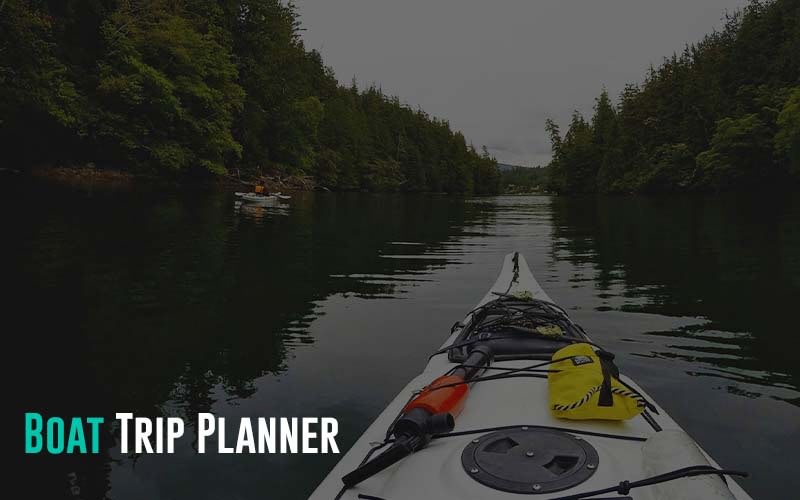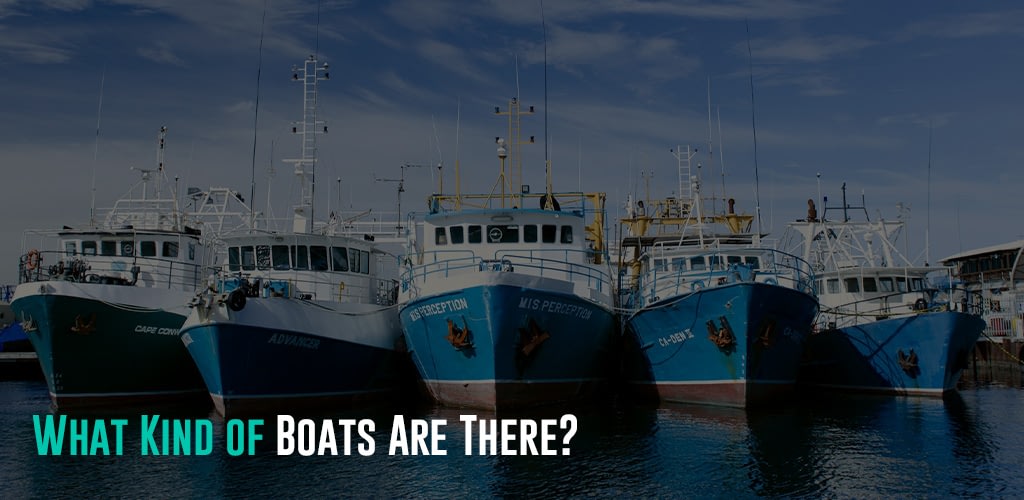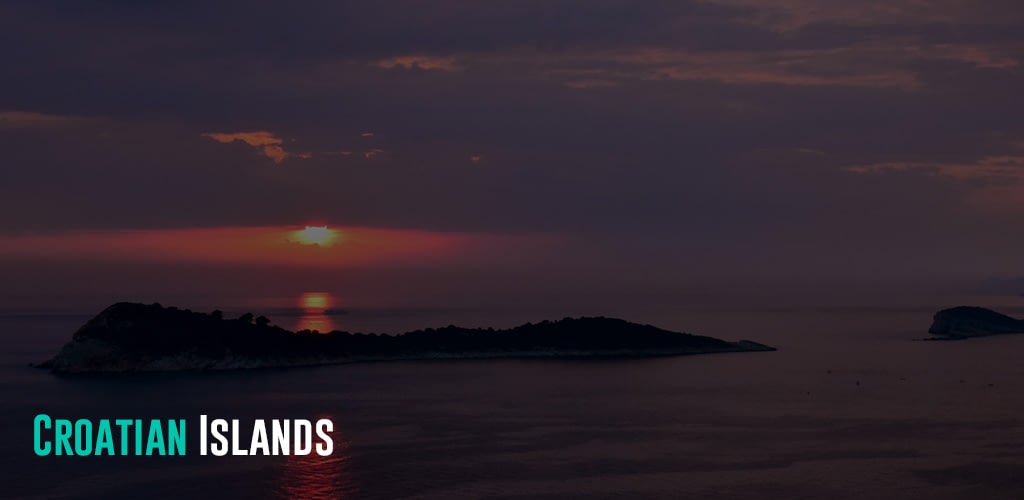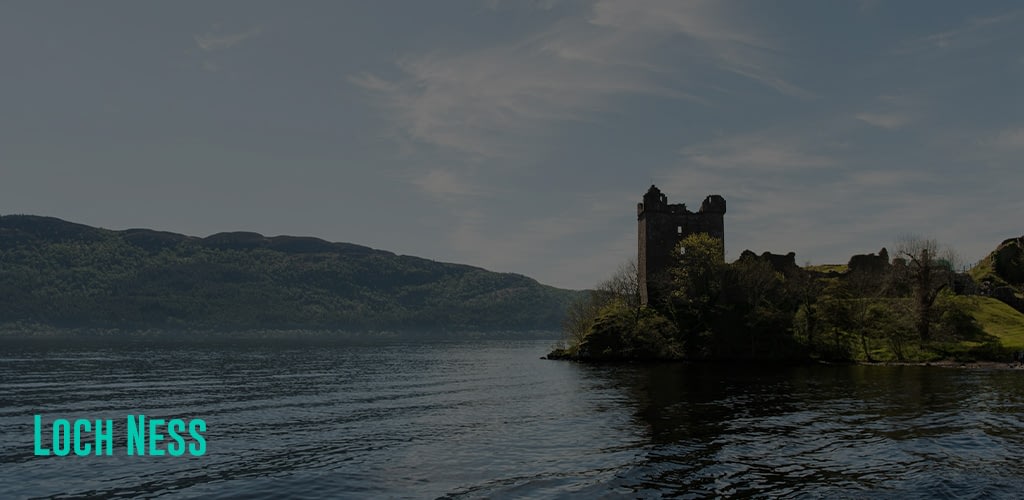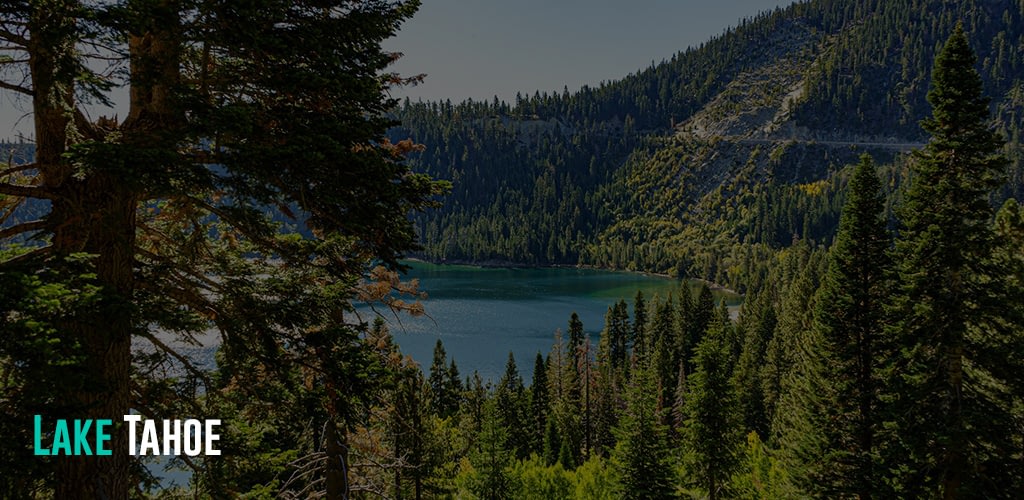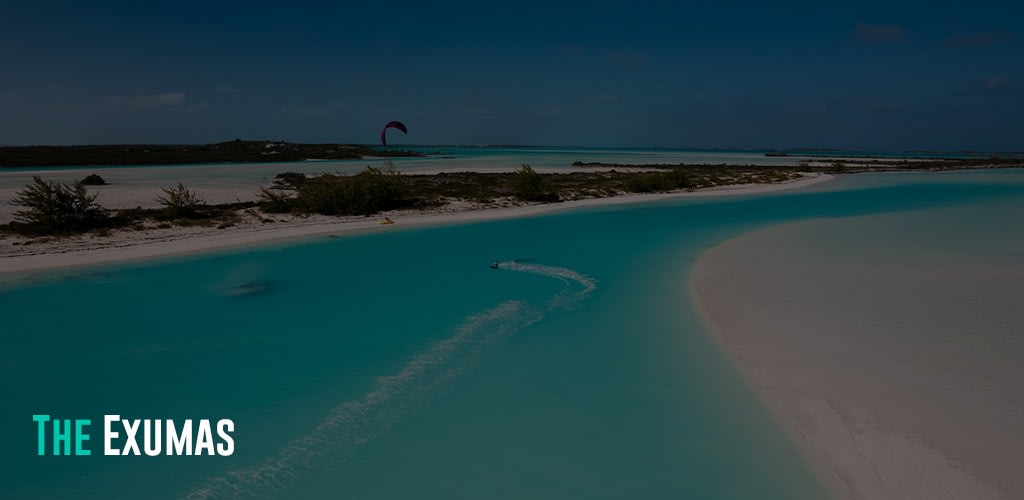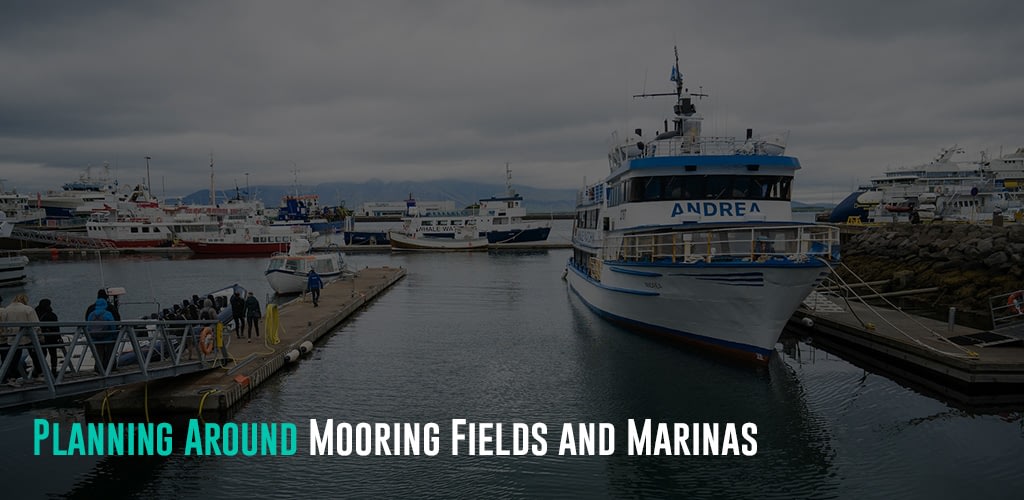How do you plan a boat trip? Planning a trip by boat is not similar to planning an ordinary vacation. While a boating trip is a unique and fun experience, a lot of careful planning and preparations go into it to make it successful. It involves several key steps to ensure a smooth and enjoyable adventure on the water. You need to choose a destination and determine the duration of your trip. Then, you need to research the water conditions, check weather forecasts, and arrange any necessary permits for your chosen location. After that, you’ll need to select the type and size of the boat that suits your needs and experience level. Finally, you’ll also have to create a detailed itinerary, including planned activities, safety gear, meals, and overnight accommodations.
Sounds too much? Well, don’t worry because our boating trip planner is here to help! Today, we will outline all the major aspects of planning a trip by boat and ensure you have a fun time with your loved ones.
Featured Image Source
What Kind of Boats Are There?
A boating trip planner should always start by discussing the various types of boats available to you. Whether you are a complete beginner or have some boating experience, there are plenty of boat options out there. Let’s look at some major ones:
1. Jon Boats: These are incredibly simple, flat-bottomed boats that are easy to operate and navigate, making them ideal for beginners exploring lakes or small rivers. Due to their simplicity, these boats are only suitable for short fishing trips, leisure cruising, or wildlife observation.
2. Fishing Boats: As the name suggests, fishing boats are designed for fishing enthusiasts. These boats come in various styles, such as bass boats, bay boats, center console boats, etc. They offer features like casting decks, live wells, and rod holders. These are a superb choice if you are making a boat trip planner specifically for fishing-related activities.
3. Dinghies: These are small, lightweight boats that are easy to handle and transport, making them perfect for beginners learning the ropes of boating. Dinghies can be used as tenders for larger vessels, for fishing in sheltered waters, or for short trips close to shore.
4. Inflatable Boats: Portable and versatile, These boats are excellent options for beginners seeking affordability and convenience. Inflatable boats are highly portable and versatile as they can be easily inflated and deflated, making them ideal for storage and transport. However, these boats are only suitable for calm waters such as ponds, lakes, or protected bays.
5. Powerboats or Cabin Cruisers: If you are planning a trip by boat for more than a day, cabin cruisers are a fantastic choice. They combine the comfort of a cabin with the speed of a powerboat. Cabin cruisers are designed for overnight boating trips and long cruising trips. They come with features like sleeping quarters, a bathroom, and amenities like air conditioning and entertainment systems. Choose cabin cruisers if you are planning to explore coastal waters, inland lakes, and intercoastal waterways. Cabin cruisers make traveling by boat stylish and glamorous.
6. Cuddy Cabins: These are compact boats featuring a small cabin space below deck. While they are smaller than cabin cruisers, cuddy cabins also offer facilities like overnight accommodations for weekend getaways or fishing trips. Cuddy cabins are versatile vessels suitable for day cruising, fishing, watersports, and overnight stays on inland lakes or rivers.
Considerations for Things You Need For the Boat Trip
1. Food/Water Per Day Per Person
Food and water are two of the most important parts of your boating trip planner. Since you would be exploring the waters for longer durations, sometimes more than a day, it’s vital to plan your meals strategically.
Consider the duration of your trip and the number of people on board to calculate the correct amount of food that you’ll require per day. Pack non-perishable snacks, easy-to-prepare meals, and plenty of water and energizing drinks to stay hydrated. Make sure to carry a portable cooler along with bottled water and sports drinks.
Finally, don’t forget to take into account the dietary restrictions and preferences when planning meals to ensure everyone is well-fed throughout the journey.
2. Hired Captain
This point is especially important for absolute beginners who are renting a boat. If you have never set sail by yourself and this is your first boating trip, avoid the DIY route.
Consider hiring a qualified captain to steer the vessel and provide guidance. A skilled captain will ensure the overall safety and enjoyment of all the people on board. They will also offer local tidbits, navigation expertise, and assistance with boat handling, resulting in a more enjoyable journey.
3. Boat Inspection
In case you have decided to maneuver the boat yourself, include a thorough inspection in your boating trip planner. Before setting sail, conduct a complete inspection of the boat to ensure it’s in proper working condition and equipped with essential safety features.
For the inspection, check the hull, engine, navigation lights, communication devices, and emergency equipment such as life jackets, fire extinguishers, and first aid kits. In case you think any maintenance is required, make sure to get it done and not ignore it.
4. Fuel
Estimate the amount of fuel necessary for the planned itinerary and ensure the boat’s fuel tank is adequately filled before you depart. For this, you can take into account the boat’s typical mileage. Think about how far your boat can travel under normal cruising speed with a full tank. Once you have estimated this, calculate the distance it would cover with the same speed but with 70 percent of the fuel tank. Doing so will help you plan for emergency situations.
Align with estimating fuel amount, it is also important to plan refueling stops along the route. Mention the fuel consumption rates and distances between different fueling stations in your boating trip planner. Carry extra fuel containers as a precautionary measure.
5. Safety Gear
Never set sail without sufficient safety gear, equipment, and emergency supplies. This includes life jackets for every passenger, a working fire extinguisher, a sound-signaling device (such as a whistle or horn), navigation lights, a satellite phone, and a reliable navigation system.
You should also carry a basic toolkit, a fully stocked first-aid kit, spare parts, and emergency provisions like blankets, flashlights, and waterproof matches in case of emergencies.
Good Places for Beginner Boat Trips
Finding the best places for a boating trip can be confusing, especially if you are doing it for the first time. Thus, to help you make the right choice, here are our top choices for beginner-friendly places to have a boating trip. Make sure to include them in your boating trip planner:
1. Croatian Islands, Croatia
With its pristine coastline, clean waters, and charming historic towns, the Croatian Islands offer a picturesque backdrop for beginner-friendly boating adventures. If you don’t plan to handle the boat yourself, you can easily rent motorboats or even join organized tours to explore popular islands like the Hvar, Brac, Vis, and Korčula. These Croatian Islands are full of stunning secluded beaches, hidden coves, and beautiful fishing villages.
Along with exploring the rich cultural heritage and natural beauty of the region, you and your loved ones can enjoy activities like swimming, snorkeling, and sunbathing.
2. Loch Ness, Scotland
Scotland is one of the premier destinations for boating trips. Thus, it should definitely be a part of your boating trip planner.
The Loch Ness is popular for its legendary monster. However, the place offers way more than just mysterious folklore. Located in the gorgeous Scottish Highlands, Loch Ness stretches for over 23 miles, making it the United Kingdom’s largest lake by volume. Whether you are going on a boating journey for the first time or have experience, Loch Ness has something for everyone. It offers ample opportunities for leisurely cruising and sightseeing.
Visitors can rent a boat or participate in cruising tours to navigate the loch’s deep waters, surrounded by lush green hills and breathtaking scenery. And oh! You can also try to spot that famous monster, Nessie.
3. Lake Tahoe, California/Nevada, USA
Nestled in the Sierra Nevada Mountains, Lake Tahoe is one of the largest freshwater lakes in the Western United States. This beautiful lake is renowned for its crystal-clear waters and stunning alpine scenery.
If you are looking to plan your boating trip in the US, there are very few places as good as Lake Tahoe. Here, you can easily rent kayaks, canoes, inflatable boats, or pontoon boats to explore the lake’s tranquil bays, coves, and sandy beaches. You can also spot several beautiful birds and fishes while exploring.
Move just about 20 miles northwest, and you will be able to spot a smaller but equally beautiful lake called the Donner Lake. It also offers calm waters and stunning vistas for novice boaters to enjoy.
4. The Exumas, The Bahamas
The Exumas in The Bahamas are a paradise for boaters seeking pristine beaches, turquoise waters, and abundant marine life. From renting kayaks to power boats, there are plenty of options for you here.
If you are a complete beginner, you can also consider joining guided excursions to cruise through the Exuma Cays Land and Sea Park. This is a beautiful spot where you can encounter stunning coral reefs, shallow sandbars, and even swimming pigs. If you are a fan of underwater activities, The Exumas won’t disappoint you. From snorkeling to diving, you can enjoy plenty of water sports and explore vibrant underwater ecosystems teeming with colorful fish and coral formations.
Charting the Course for a Boat Trip
Whether you are a novice or have experience in maneuvering boats for boating trips, it’s always smart to chart the course before departing. Make sure to research navigation charts, maps, and cruising guides to identify mooring fields, marinas, and navigational hazards along your intended route. Next, plot waypoints and mark key landmarks to guide navigation and avoid obstacles like shoals or underwater obstructions.
It is also wise to plan alternative routes and emergency anchorages in case of changing weather conditions or unforeseen circumstances. If you don’t want to use manual charts, you can use electric navigation devices to chart your boating trip course. Devices like GPS/chart plotters and radar systems are a great choice. They can not only help you chart your trip but also track your progress accurately.
Planning Around Mooring Fields and Marinas
Your boating trip planner should have various safe mooring fields and marinas where you can dock, refuel, and restock your vessel. For a hassle-free journey, we recommend you check the availability of different mooring fields and make reservations in advance, especially during peak seasons.
Further, familiarize yourself with local regulations, mooring fees, and operating hours to avoid any confusion upon arrival.
Safety Preparation for Boat Trips
Here is a safety preparation checklist for your boating trip planner:
- Conduct a pre-departure safety inspection to ensure the boat is properly equipped with all safety gear and is in good working condition.
- Check weather forecasts and sea conditions before departure.
- Keep on monitoring weather updates throughout the trip to anticipate any changes or hazards.
- File a float plan with the local authorities. Make sure the plan details your planned route, departure/arrival times, and emergency contact information.
- Share the trip details with all the passengers on board.
- Assign designated roles and responsibilities to all passengers and crew members, including information regarding emergency procedures, use of safety equipment, and communication protocols.
- Carry emergency supplies and extra food and water.
- Review basic navigation rules, emergency protocols, and distress signals with everyone on board.
Conclusion
So, there you go! That was all about our boating trip planner and boat trip considerations. What are you waiting for? Use this boating trip planner to prepare for your own trip and have the best time with your loved ones while exploring crystalline waters and picturesque scenery.
In case you need more help planning your boating trip, consider using an online boating trip planner like Travel-Wise! Travel-Wise can help you pick the best destination and time for your vacation. You can even use its advanced AI itinerary generator to come up with a complete boating trip itinerary in your chosen location within minutes. Not only this, but you can use Travel-Wise Country Guides to learn about various countries and whether or not they offer destinations for a boating trip! Sounds fantastic, right? Check it out today!

